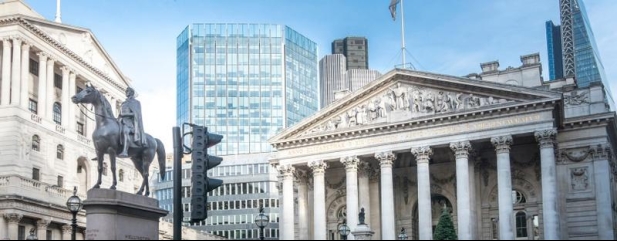Central bank statements likely to be key to short-term market direction

Even though hopes for early interest rate cuts have been dialed back since the start of the year, the focus this week will still have been on the central bank meetings in the US and the UK with analysts trying to decipher the commentaries for clues as to future policy intentions.
In the UK, the Bank of England is widely expected to leave rates unchanged at 5.25% on the basis that inflation – while it is heading in the desired general direction thanks to lower energy prices – is still some way off the official 2% target.
At the previous MPC (Monetary Policy Committee) meeting there were no votes to cut rates, three votes to raise rates and six votes to hold them unchanged.
The EY ITEM Club, which uses the same model of the UK economy as the Treasury, forecasts rates staying at 5.25% until May due to central bank wariness over high services inflation and the potential impact of April’s increase in the national living wage.
It’s a similar story in the US, where expectations for rate cuts have also been pushed back, despite inflation having come down much faster, due to the resilience of the US economy and in particular consumer spending.
As one commentator put it after the fourth-quarter real GDP (gross domestic product) figure came in at 3.3% against forecasts of 2%, the economy isn’t headed for a ‘soft landing’ so much as no landing at all.
It’s little wonder therefore the major US stock indices are trading at new all-time highs.
As for what lies ahead, there could be some volatility around the US payroll and non-farm output figures on 2 February, but next week focus moves back to the UK with January retail sales data, Halifax house prices and the construction industry PMI (purchasing managers index) likely to be the main highlights.
Important information:
These articles are provided by Shares magazine which is published by AJ Bell Media, a part of AJ Bell. Shares is not written by AJ Bell.
Shares is provided for your general information and use and is not a personal recommendation to invest. It is not intended to be relied upon by you in making or not making any investment decisions. The investments referred to in these articles will not be suitable for all investors. If in doubt please seek appropriate independent financial advice.
Investors acting on the information in these articles do so at their own risk and AJ Bell Media and its staff do not accept liability for losses suffered by investors as a result of their investment decisions.
Issue contents
Daniel Coatsworth
Editor's View
Education
Feature
Great Ideas
Investment Trusts
News
- Pfizer beats earnings expectations but still has a lot to do to recapture former glories
- Chinese stock market rocked by $330 billion Evergrande liquidation
- Why shares in fashion victim Superdry have slumped 50% year-to-date
- InterContinental Hotels continues to benefit from strong travel demand
- Luxury goliath LVMH shows resilience but Diageo serves up sobering results

 magazine
magazine








